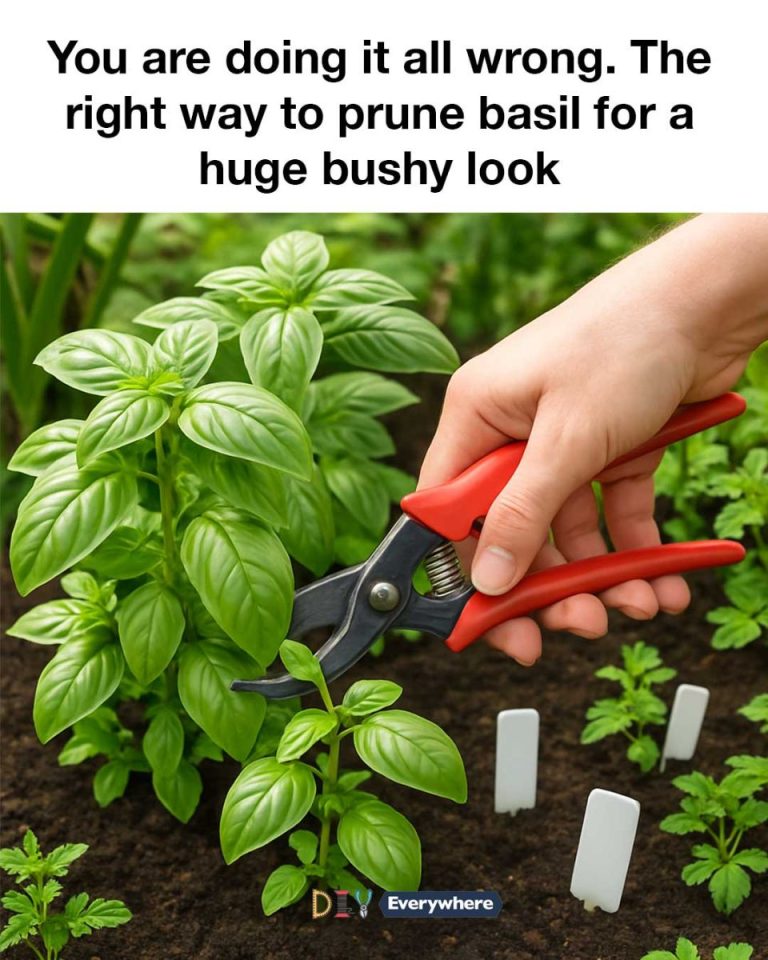ADVERTISEMENT
You are doing it all wrong. The right way to prune basil for a huge bushy look

One of the most common mistakes gardeners make is not pruning enough. Many people are afraid to cut back their basil plants, worried that they might damage them. However, this hesitation can lead to tall, spindly plants with fewer leaves. Another mistake is pruning too late. Waiting until the plant has already started flowering can result in a significant reduction in leaf production.
Additionally, some gardeners make the mistake of cutting too close to the base of the plant. This can stress the plant and reduce its ability to recover and produce new growth. It’s important to prune just above a pair of leaves to encourage branching and maintain the plant’s vigor.
4. When to Prune Your Basil for Optimal Growth
Timing is crucial when it comes to pruning basil. The best time to start pruning is when the plant is about 6 inches tall and has at least three sets of leaves. This early pruning encourages the plant to develop a strong, bushy structure from the start.
Throughout the growing season, continue to prune regularly, ideally every 2-3 weeks. Keep an eye on your plant and prune as soon as you see it starting to flower. By removing the flowering tops, you can redirect the plant’s energy back into leaf production.
5. Tools You Need for Effective Pruning
For effective pruning, you’ll need a pair of sharp, clean scissors or pruning shears. Sharp tools make clean cuts, reducing the risk of damaging the plant and preventing the spread of disease. It’s also important to sanitize your tools before and after use to avoid introducing pathogens to your basil.
Some gardeners prefer to use their fingers to pinch off the tops of the plant. While this can be effective for small cuts, using scissors or shears is recommended for larger pruning tasks to ensure precision and cleanliness.
6. Step-by-Step Guide to Pruning Basil
1. Begin by identifying the topmost pair of leaves on your basil plant. Look for a pair of healthy leaves with a strong stem.
2. Using your scissors or pruning shears, make a clean cut just above this pair of leaves. This cut will encourage the plant to produce two new stems from the leaf nodes.
3. Continue this process throughout the plant, focusing on areas that are becoming too tall or leggy.
4. Remove any flowers or buds as soon as they appear to keep the plant focused on leaf production.
5. Regularly check your plant and repeat the pruning process every 2-3 weeks to maintain its bushy shape.
7. Viral Hacks: Using Scissors vs. Pinching
There is a debate among gardeners about whether it’s better to use scissors or simply pinch off the tops of basil plants. Scissors provide a clean, precise cut, which is less stressful for the plant and reduces the risk of disease. This method is particularly useful for larger pruning tasks.
Pinching, on the other hand, can be convenient for quick, small cuts. It allows you to feel the plant and make adjustments on the fly. However, pinching can sometimes crush the stem, which may lead to damage if not done carefully. For best results, use scissors for major pruning and reserve pinching for minor adjustments.
8. How Much to Prune for a Bushy Basil Plant
To achieve a bushy basil plant, aim to prune about one-third of the plant’s height each time you prune. This might seem like a lot, but it encourages the plant to produce more branches and leaves. Always prune just above a pair of leaves to stimulate new growth.
Be mindful not to remove more than one-third of the plant at a time, as this can stress the plant and hinder its recovery. With regular pruning, your basil will become fuller and more productive over time.
9. Encouraging New Growth After Pruning
ADVERTISEMENT